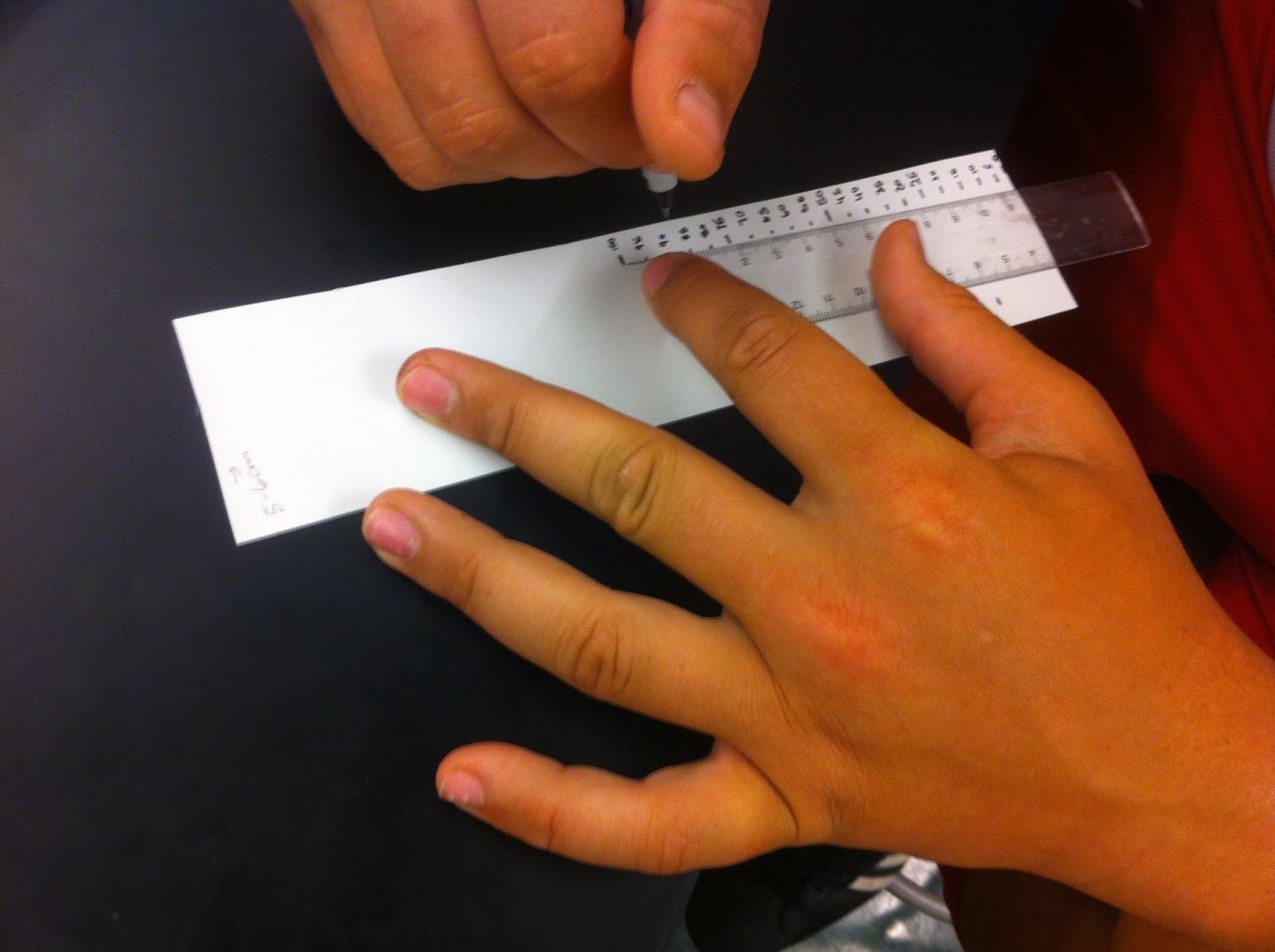Introduction:
In order to make a thermometer it requires precise measurements. The purpose of this lab was to realize the difficulty of making an accurate thermometer and the proper way to read a thermometer. Most thermometers are made out of mercury or alcohol to measure the temperature of certain substance. Once you put the thermometer in or on a substance the alcohol will slowly rise if the substance is hot. If it’s cold the alcohol level will go down.
Materials:
Materials:
Unmarked thermometer
Beaker
Distilled water
Hot plate
Ice
Sharpie
Ruler
Calculator
Tape
Plastic backing
Procedures:
- Fill beaker with ice and enough distilled water to have the meniscus read 100 mL
- Suspend the thermometer in the ice water and stir slowly
- Quickly remove the thermometer and keeping the spot, attach the plastic backing to having the bottom match up with the point where the thermometer was in the ice water
- On the plastic backing, mark this as 0 degrees celsius
- Plug in the hot plate
- Fill up beaker with 100 mL of water
- Put the beaker on the hot plate until it begins boiling
- Suspend the thermometer in the boiling water, stirring slowly, and mark the point where the alcohol is as 100 degrees celsius
- Unplug the hotplate
- Lay the thermometer flat on the table and, using the ruler, measure the distance between 0-100˚ C in cm
- Divide the distance by 100 in order to get the distance between every single mark on the thermometer
Extension:
1)We have learned that creating an accurate measuring tool needs number of trials. For example, our group remeasured the boiling and freezing temperature three times to make sure the temperature was correct. If we were to create a measurement tool we would use do number of trials to make it accurate.
2)The distilled water is pure water compare to other water such as, tap water, bottled water, and etc. The reason why we want pure water is because we need the exact boiling and freezing point of the water. Without the pure water we could have had different results because of different elements inside the water. For example, if we used tap water instead of distilled water we could have had a different result because the tap water contains different mineral. Those minerals could have made the difference in temperature.
3) We had a few source of error that increased our percent error. First, it was hard for us to distribute equal space in between the sharpie marks because we went up by one degree and the sharpie was too thick to mark the spaces. Second, when we were dividing the thermometer into equal space it was hard for us to round up the number into a precise number. Third, the distilled water took a long time to reach the boilling point. This procedure took us almost half of our lab time. If we saved more time on this procedure we would have had more accurate thermometer.
4)We’ve made the scale to go up by 1 because we thought we would have more success on a smaller scale. If ours went up by 5 it would have been hard to guess the temperature between the two scales. Also if we went up by less than 1 we would have had hard time figuring out the space between the scales. Even though we had a small error our experiment was successful.







